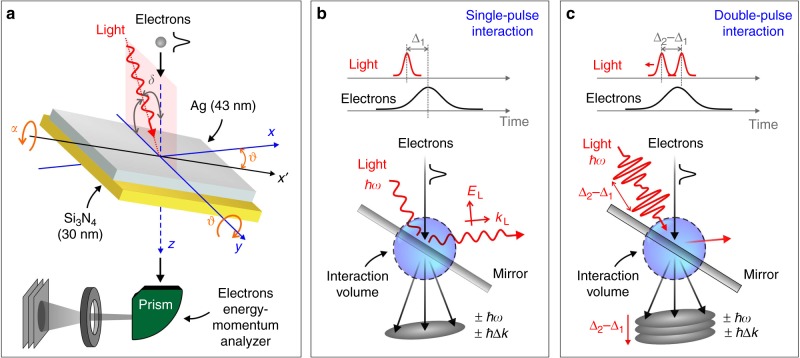Fig. 1.
Experiment probing free-electron interaction with semi-infinite light fields. a Ultrashort 200 keV electron pulses travel along the z axis and impinge on the surface of a Ag/Si3N4 thin bilayer, which is mounted on a double-tilt holder able to rotate around the x (angle α) and y (tilt angle ϑ) axes. Light propagates within the y–z plane, incident with an angle δ ~ 4–5° relative to the z axis and then reflected from the Ag surface. The resulting electron–photon interaction is probed by monitoring electron energy-loss spectra as a function of geometrical parameters and light properties. b Description of the electron–light interaction here explored. The breaking of translational invariance produced by light reflection enables photon absorption or emission by the electron corresponding to a quantized energy and momentum exchange. c Description of the three-pulse experiment used for coherent modulation of the electron wave function. Electrons interact with an appropriately synthesized optical field distribution produced by two mutually phase-locked photon pulses whose relative phase is changed by varying their relative delay Δ2 − Δ1

